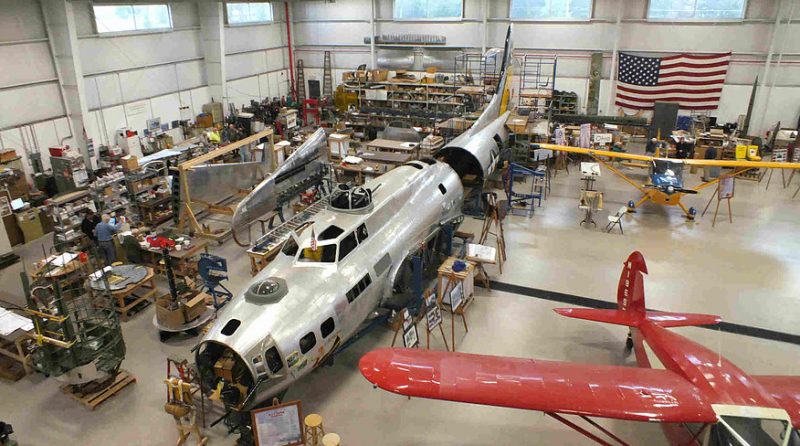The director of the Champaign Aviation Museum in Urbana, Ohio gets the same question everyday from visitors. They all want to know how much longer before the B-17 bomber is ready.
David Shiffer has been telling them “five or six more years” for the last decade.
The B-17 in question is being restored by volunteers. It sits in a hangar next to the museum. The tail, with a fresh coat of paint and insignia, is attached to the rear of the fuselage, which is not attached to the front. The wings are not completely assembled yet.
The project pulls in volunteers excited by the rare opportunity. “It’s a piece of history,” said Jim Rudolph, a financial planner from Westerville. He’s one of approximately 300 volunteers who have worked on the plane over the years.
Randy Kemp of Mount Sterling is the only paid employee working on the project. He usually finds people waiting for him to unlock the door when he arrives at 8 am each day.
On a recent day, a retired dentist was hammering aluminum for the wings. A worker from a computer center was making ribs for the horizontal stabilizer. A semi-retired volunteer was working on the wing flaps.
Ultimately, they hope to have an airworthy plane when they are done.
Jerry Shiffer (David’s father) had the original vision to use the plane to teach vocational students valuable skills. In 2005, he died when his twin-engine plane crashed in Montana just before work was scheduled to begin on the bomber.
It soon was apparent that the plane was not going to be as much of a restoration as a new build since original parts were scarce.
The plane uses parts from several other B-17s. One of those B-17s crashed in Alaska, and another appeared in the television show, 12 O’Clock High. The top gun turret was found under a porch in nearby Springfield. The rest of the plane is being constructed from new material.
During World War II, the U.S. built over 12,000 B-17s. About ten can still be flown. The 11th is going to be flown from Urbana, in five or six more years.
